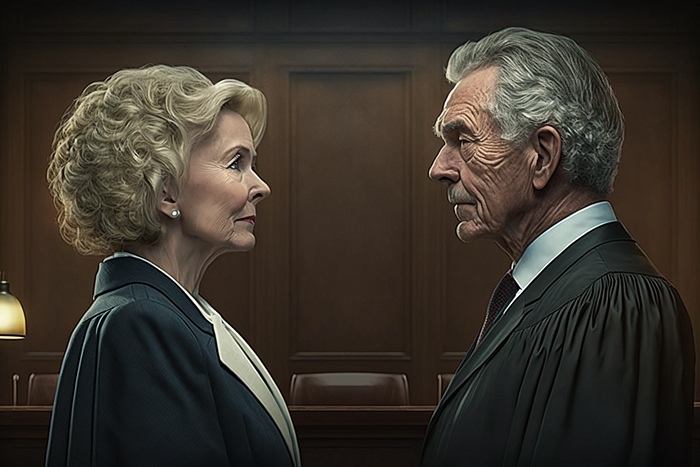When Two Federal Judges Rule Differently On Similar Issues
A Tale of Two Rulings: The Legal Labyrinth of Conflicting Cases

On Friday night, two federal court rulings sent shockwaves through the already contentious abortion debate. With the dust from Roe v. Wade’s reversal still settling, these cases took center stage, embodying the chaos and uncertainty that now grips the nation.
In less than an hour, two starkly different verdicts emerged from the legal arena. The first came from Texas, where anti-abortion activists celebrated a judge’s decision to halt the FDA’s approval of mifepristone, a medication used to terminate pregnancies. But hold your horses — the court paused the ruling for a week to allow for appeals.
Barely catching our breath, we then witnessed Democratic-led states suing in Washington to expand access to abortion pills. This time, the judge ruled in favor of maintaining the drug’s availability in the 17 states and the District of Columbia involved in the lawsuit.
While neither case directly tackled the thorny issue of abortion rights, the Texas ruling dipped its toes into uncharted waters by suggesting that embryos might have individual rights courts should consider.
So how did we end up with two polar opposite rulings? Well, the U.S. legal system is a decentralized labyrinth, with varying interpretations of the law and unique perspectives from judges. These cases, born from the political turmoil that followed Roe v. Wade’s reversal, now find themselves on the doorstep of the Appellate Courts demanding resolution.
What Happens Next?
When two federal court rulings clash on the same issue, like the recent medication abortion cases, the U.S. legal system relies on a series of steps to untangle the mess and establish a clear legal path forward. Let’s dive into this intricate process, from the appellate courts to the ultimate stage: the United States Supreme Court.
- Appeal to a higher court: When parties in conflicting cases are unhappy with the district court’s decision, they can appeal to the respective federal circuit court of appeals. In the medication abortion saga, both sides may choose to challenge the rulings, requesting a review by these higher courts. The appellate courts can either affirm or reverse the lower court’s decision. If they too disagree, the plot thickens, and the resolution requires further action.
- En banc review: Occasionally, a circuit court of appeals may decide a case demands an en banc review, where all judges in the circuit participate in the ruling. This occurs when the legal question is significant or when the issue is of substantial importance. This process aims to deliver a more definitive decision and settle conflicts within the same circuit. However, if the appellate courts still can’t agree, the stage is set for the Supreme Court to step in.
- Supreme Court review: As the grand finale of the legal drama, the U.S. Supreme Court enters the scene. If circuit courts of appeals offer conflicting decisions, the highest court in the land may grant certiorari, meaning they accept the case for review. It’s important to note that the Supreme Court has discretion in choosing which cases to hear, and they typically select ones that present significant legal questions or involve disagreement among lower courts. When the Supreme Court makes a decision, it sets a binding precedent for all lower courts nationwide, bringing the story to its climax.
- Congressional action: In some instances, when the legal wrangling reaches a fever pitch, Congress might seize the opportunity to step in and enact new legislation. By clarifying or resolving the contested issue through new laws, Congress can create a consistent approach across all jurisdictions, sidestepping the need for a Supreme Court ruling.
While the process of resolving conflicting decisions can be complex, lengthy, and filled with twists and turns, it’s a crucial part of the U.S. legal system. This labyrinthine journey ensures that all legal issues are thoroughly examined, debated, and ultimately resolved — like an epic tale unfolding before our very eyes. And so, as the medication abortion cases continue on their unpredictable path, we await the next chapter in this legal saga.
Mitch Jackson, Esq.
2013 California Litigation Lawyer of the Year
2009 Orange County Trial Lawyer of the Year
